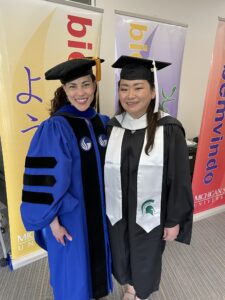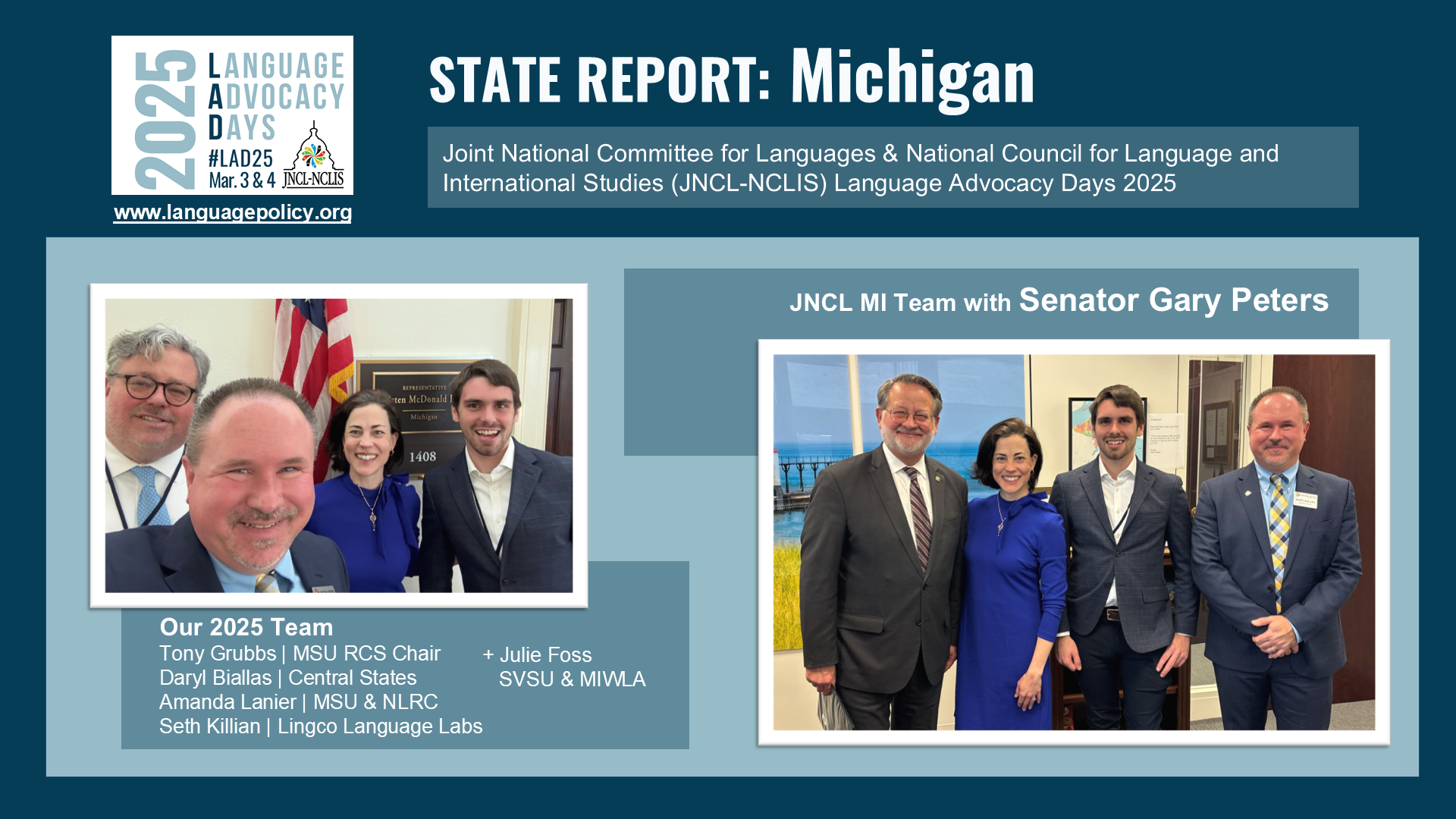About the Project
The Program Diaries Project: World Language Teacher Collaboration in Context
This research project is a collaborative effort involving every student who enrolls in FLT 817 Program Development and Administration. The data collection draws upon interviews that these teacher-learners conduct with their own colleagues about topics including collaboration, teacher development and supervision, curriculum decisions, alignment, and program goals and outcomes.
Since it began in 2020, this project has incorporated insights into more than 30 world language programs in the U.S. and other countries. It has informed presentations on program vitality, teacher isolation, collaboration with teachers of other languages, the value of virual community for supporting teacher development, and managing change in world language programs. Related endeavors include a separate but related research project on Teacher Attrition and Retention and the ViVID Project through the NLRC, which includes professional development and research to support instructors of less-commonly-taught languages (LCTLs).

FLT 817 Program Evaluation Project
Description (from Assignment Guidelines)
Effective leadership in language teaching programs depends on the ability to identify important features of the program, compare it with the needs of students and other stakeholders, and respond to those needs appropriately. This assignment will involve collaborating with peers to describe a program, identify strengths as well as areas for growth, and propose steps and strategies for promoting that growth. The content of this course presents the process of program evaluation as a necessary endeavor that can serve well to improve the efficiency and effectiveness of language programs. In this case, we will use the term program evaluation, but we will not assume that we have a mandate or the resources to carry out a full program evaluation. Instead, we will identify areas of focus, particularly in regard to teacher supervision and curriculum development, and center our analysis and recommendations on those areas.
Students who are not currently teaching or belong to very small programs will be able to cooperate with classmates in the course. You will carry out this project in groups of two or three. Every project will have a slightly different focus and structure, but in each of them the group members will have these roles:
- Participant role: In each group, one member is an insider in the program that the group will evaluate and describe. This person will coordinate interviews, gather materials that help to describe the context and issues relevant to the focus, and help with analysis and writing. This person will take the lead on writing the description and make sure that the recommendations and the executive summary are appropriate for sharing with the program and its stakeholders.
- Observer role: The other group member(s), who will not be as familiar with the program, will take the lead in regard to the literature review, the data analysis, and the process of writing and revising each stage of the report. This person may also participate in the interview process and/or collect relevant materials such as curriculum guides.
The primary source of data for this report will be the interviews that you are conducting as part of our Interview Series in this course. Given our responsibility to maintain research ethics in regard to human subjects, we will not report student data in any way that would make the students identifiable. Also, any teacher or supervisor who contributes through interviews or providing written materials should be provided with the opportunity to give consent or refuse to participate. It is important to clarify to anyone and everyone involved in the program that you are not evaluating the teachers themselves, that their participation in any way is voluntary, that information that would specifically identify them or the school will be removed from the report when it is shared with others outside their program, and that you will share your findings and recommendations with them in the Executive Summary of your report.





